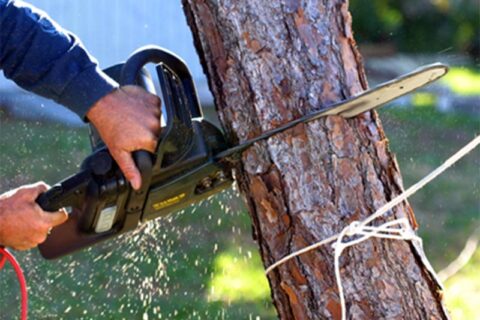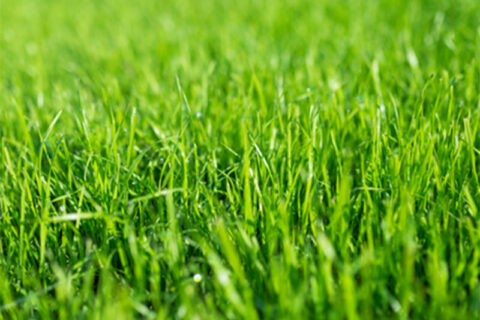The Biggest Winter Tree Dangers in Salt Lake, Utah
Do You Have Winter Tree Issues?
Winter is a wonderful time of year that brings cozy evenings with the family, holiday gatherings, and of course, winter weather. Cold and icy weather puts an incredibly intense strain on trees. If a branch is going to fall off a tree, it will happen in the winter more often than not when the wood is more brittle, and the weight of ice and snow has accumulated on the branches. There are countless problems that trees face in the winter. Here, Rent-A-Monkey explains the biggest winter tree dangers in Salt Lake and Parker City, Utah. Learn how to protect your trees from the most common tree problems in the winter.

The Most Common Winter Tree Problems
Trees may seem like solid, lifeless pieces of wood, but the winter can threaten their health and stability just like any other living thing. You may already be aware of some of the threats to a tree’s health, like broken branches. Others, like frost heaving, might be a surprise to you. Here you can learn about each of the most common winter tree problems and what you can do about them. If you experience any tree problem that requires trimming or removal, it is best to call a team of professionals.
Watch Out for Winter Burn
Evergreen trees, like spruces or firs, are susceptible to winter burn, also called desiccation. Winter burn will look like a browning, bleaching, or discoloration of the tree’s needles. The burn will start at the outside of the branches and move inward. A combination of factors will result in winter burn. The soil, when frozen for an extended period of time, does not allow the roots of a tree to get enough water. Additionally, intense winds and temperature fluctuations can increase cellular death in parts of the tree’s branches and needles.
What You Can Do About It
The first tip, when faced with a mild case of winter burn, is to be patient. If you ensure your plant is getting enough water and wrap it with a burlap sack, you can halt the progress of the winter burn. In the spring, new growth will emerge, and you can trim away the discolored branches. Sometimes, the damage is too extensive, or the regrowth is too slow. In that case, you should contact a professional to help remove the tree.
Frost Heaving Can Be a Serious Winter Tree Hazard
Frost heaving is the same process that creates uneven sections of the sidewalk and potholes in the road. When temperatures reach below freezing, soil simultaneously expands and hardens. Pockets of water freeze underground, forcing the soil to rise. During the winter, this slight raising and lowering of the soil happens every day. Over time, the movement of the soil surrounding the tree can break off roots and compromise the tree’s foundation. In the most severe cases, it can cause trees to fall over.
What You Can Do About It
While there is no surefire way to protect your trees from the dangers of frost heaving, you can take a few steps to reduce the impact of freezing soil on your tree’s root system. First, be sure to apply and maintain a heavy layer of mulch around your trees. This provides insulation to the soil below, reducing frost penetration. On top of that, be careful not to overwater the soil surrounding your tree before a freeze, as that can cause more severe frost heaving. If your tree is showing severe signs of root exposure due to frost heaving, it may be safest to just remove it entirely.
Salt Damage Can Cause Winter Tree Issues
The salt used to melt snow on the roads will inevitably seep into your soil. High amounts of salt in the soil surrounding a tree can cause catastrophic damage in just a few years. Trees with salt damage will have leaf browning and leaf scorching in the early stages. Over a longer period of time, the salt in the soil can starve your tree of nutrients and limit the moisture available to the roots.
What You Can Do About It
There are a few steps that you can take to reduce the amount of salt that gets into your lawn. First, be sure to shovel before putting salt down, as this keeps as much of it as possible on the concrete. If you want to be extra careful, you can even use a calcium chloride-based salt, which is less harmful to plants. If salt from a nearby road is the problem, you can construct a barrier or covering that keeps salt from splashing into your soil.
Winter Drought Might Surprise You
Drought is never more serious than in the winter. As the soil becomes hard and frozen, it is more difficult for moisture to penetrate it. On top of that, the roots of a tree struggle to pull hydration from the hardened soil. This often results in a severe lack of water getting to the tree resulting in dehydration. Winter drought will usually cause leaves to wilt, curl, brown, or drop.
What You Can Do About It
You can address winter drought with a few preemptive measures. Applying a healthy layer of mulch around the base of the tree will help the soil retain moisture and reduce frost penetration. On top of that, don’t neglect to water your tree in the winter if the soil is dry. There may be a pile of snow in your yard, but it doesn’t provide moisture to your ground as long as it is frozen.
Here is how you check to see if your soil needs more water. Dig down 6 inches below the surface. Make a baseball-sized clump of dirt. If the ball stays together, your soil is adequately hydrated. If it crumbles or falls apart, you need to water your tree.
Animals Can Do a Lot of Damage to Trees in the Winter
Animals can do damage to your trees during the winter. Nesting animals usually won’t threaten a tree’s structural stability, but they can attract disease and infestation. The biggest problem posed by animals is their tendency to damage the bark. Many types of rodents get desperate for food in the winter months and resort to eating large sections of bark off of trees. Deer are also known to eat fresh stems and branches from trees.
What You Can Do About It
The first line of defense against animals damaging your tees in the winter is to keep them away from it. This might include proper fencing to keep deer away or a metal mesh around the tree to keep away rodents. Organic wildlife repellants can also be placed around a tree to discourage animals. If an infestation has gotten so bad that it compromises the structural integrity of a tree or section of a branch, you should consult with a tee service professional like Rent-A-Monkey.
Dead and Broken Branches Are the Biggest Winter Tree Danger
While having a dead or broken branch is never good, it becomes a more serious problem in the winter. As the branches freeze, they become more brittle, especially if they are dead. On top of that, the branches often take on extra weight from layers of snow and ice. This combination of factors can result in massive branches falling onto homes or cars in the winter. Just a single branch from a large tree can cause damage to people or property.
What You Can Do About It
The only way to deal with the winter tree hazards presented by dead or broken branches is to remove them with tree trimming. Once a branch has broken or died, it cannot be rehabilitated. You can wait for the branch to fall off if the tree is in a remote location, away from people or valuable property. However, this will only sap nutrients needed for new growth in the tree. Tree trimming is a job best left to a team of qualified professionals, especially if the branches are of any significant size. When a branch is dead or broken, it is crucial to remove it as soon as possible.
Rent-A-Monkey’s Winter Tree Services
If you notice that a tree on your property is compromised, don’t let the winter tree hazard go unaddressed. Rent-A-Monkey is an expert, veteran-owned tree service team serving the Salt Lake Metro and PC area. We perform our services year-round. Whether you need help trimming a dangerous branch or removing an entire tree, you can trust us to get the job done right and leave no mess behind.
Get Your Free Winter Tree Service Estimate Today!
Don’t let yourself lose sleep over the safety of the trees surrounding your home. There is a local team ready to help you at any time. Rent-A-Monkey offers 24/7 emergency tree services. If you have a tree that is posing an immediate risk to your property, we are available to help you right away. On top of that, we offer free estimates for all our winter tree services. Contact us today to get your free estimate.


